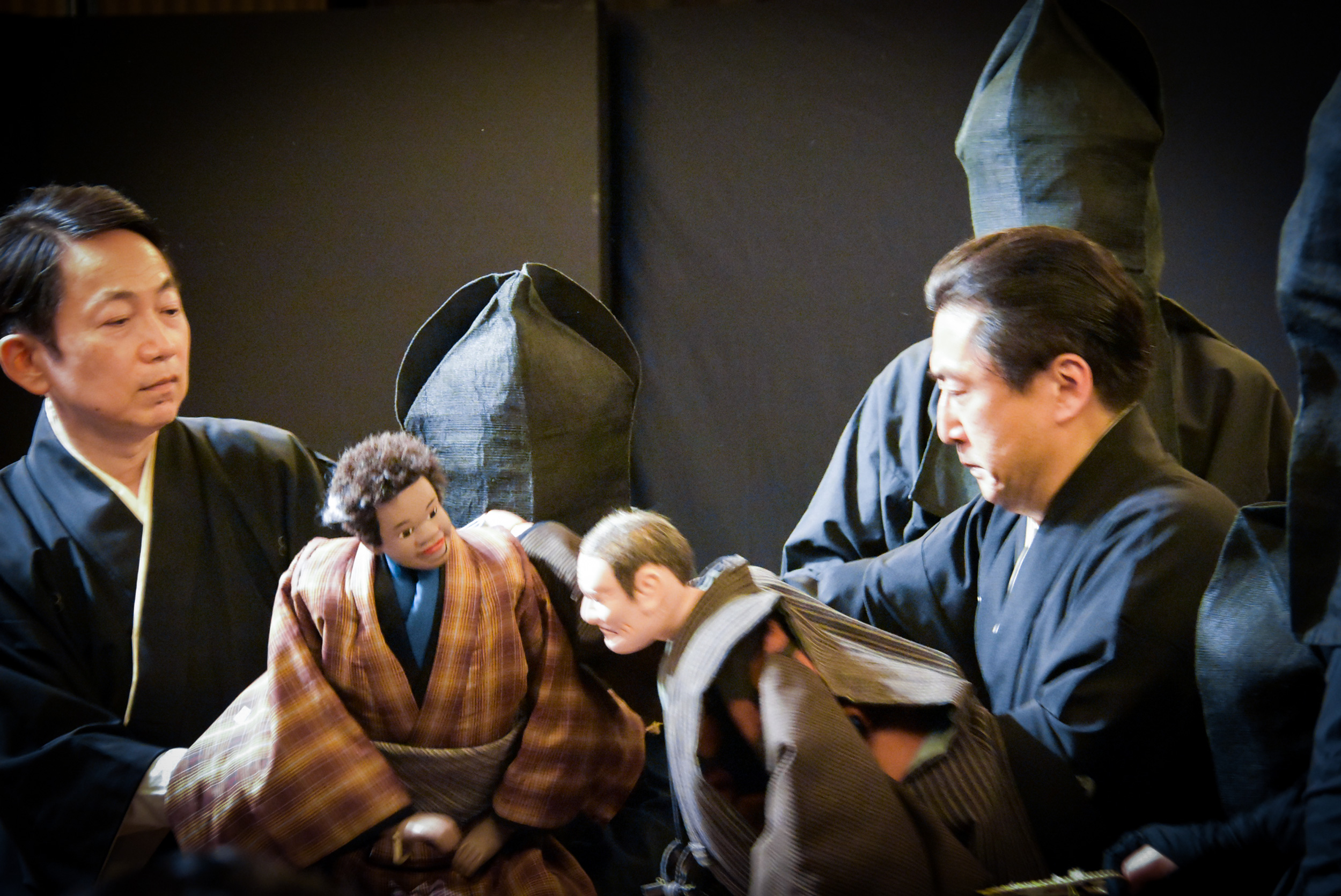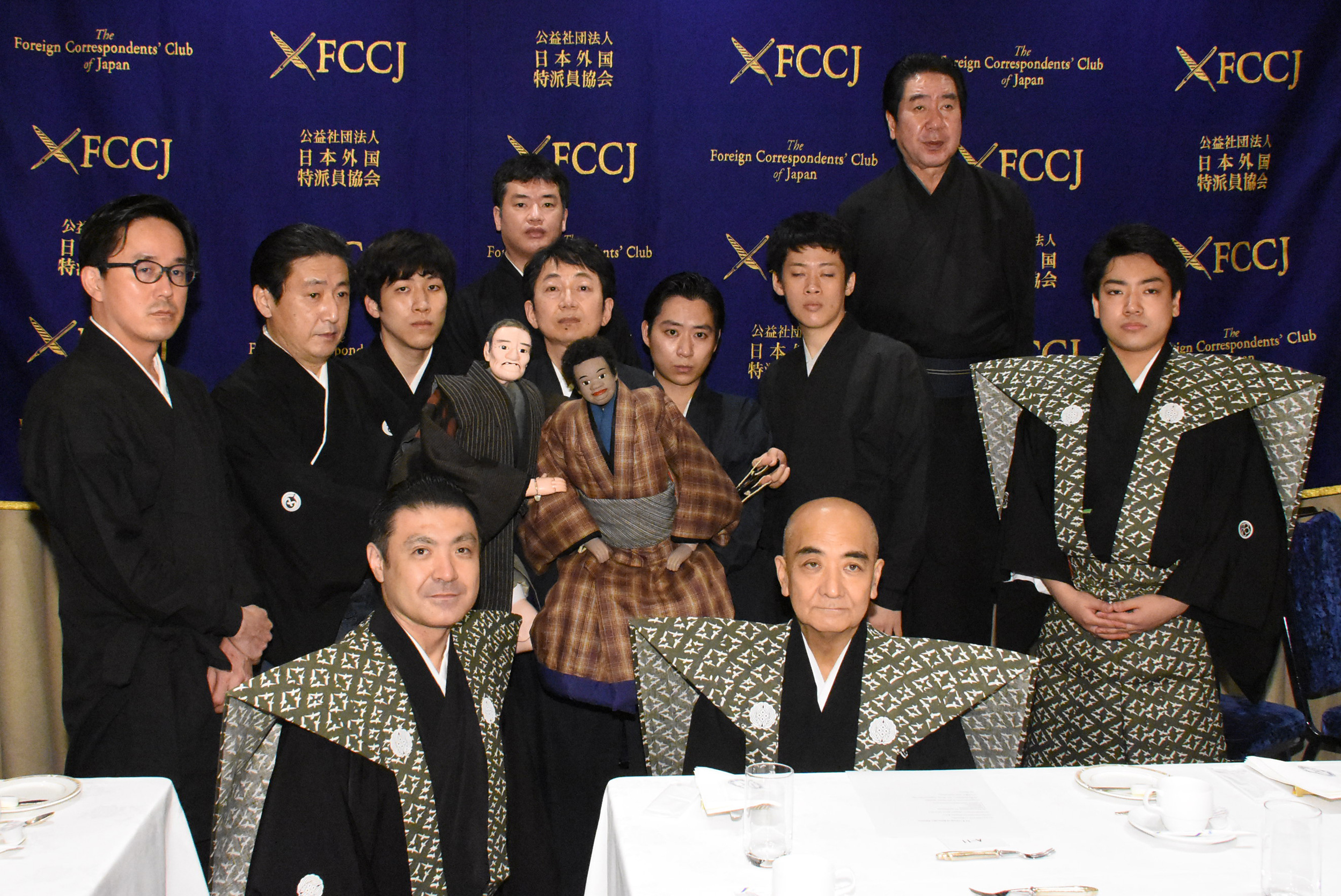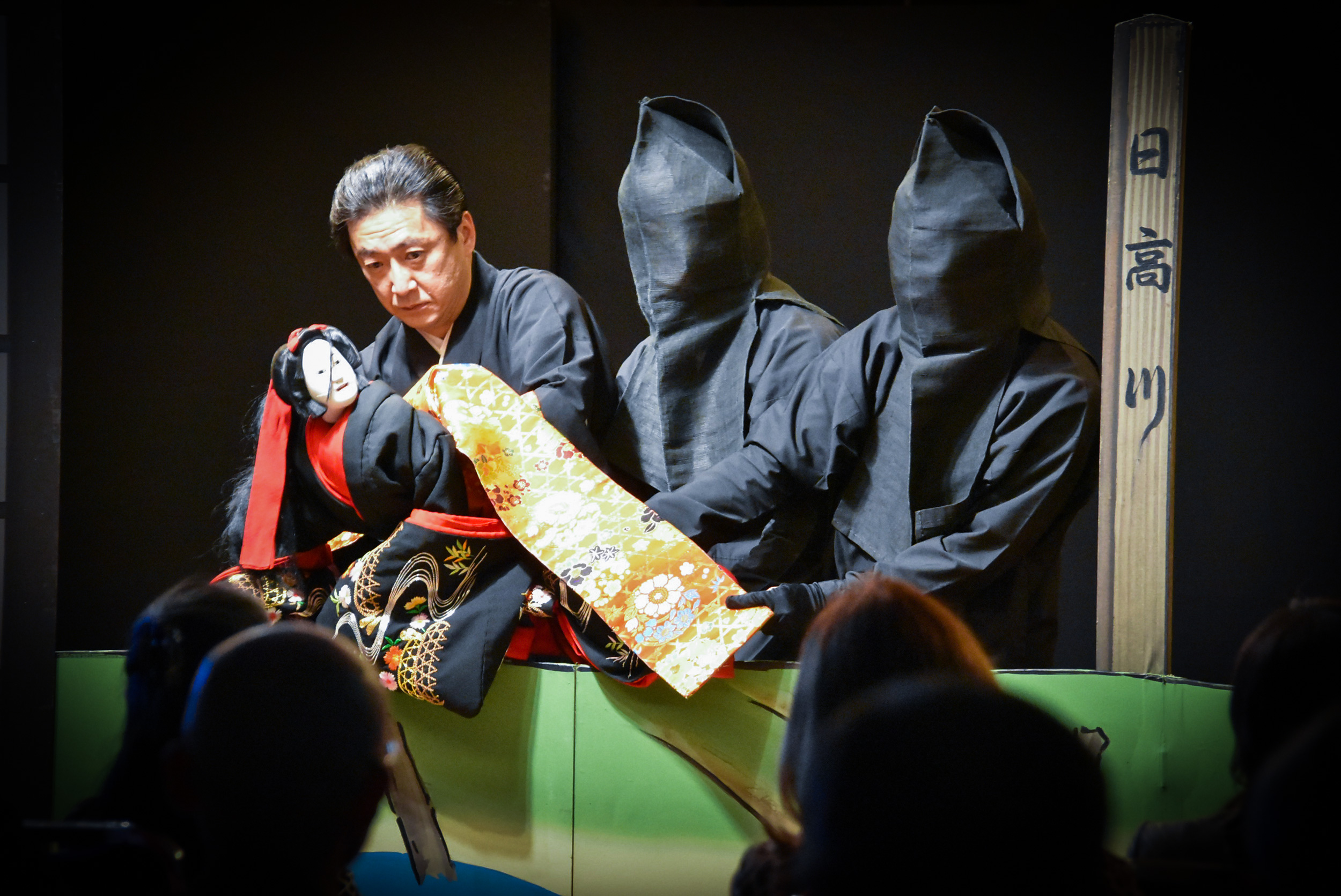Issue:
July 2022
A packed FCCJ watches revived bunraku play about the plight of mixed-race children in postwar Japan

The FCCJ hosted a special bunraku performance in May, bringing a production of The White Buddha - the revival of a story about mixed-race children in Japan during the postwar U.S. Occupation – to a packed audience. The play was first staged in 1959 and set in rural Japan. It tells the story of a grandfather’s battle against racism directed at his grandson, whose GI father was black. His Japanese mother had died.
The tear-jerker was wildly popular at that time, as it touched on sentimental adaptations of ongoing social tensions. But as Japan developed economically, bunraku returned to its lofty prewar samurai productions depicting bravery, sacrifice and love. As a result, the puppets for the boy and his grandfather were mothballed and kept in storage in Osaka, the spiritual home of the 1,000-year-old art form.

The revival at the FCCJ was performed by Japan’s top Bunraku artists and musicians.
The puppets, the play’s shamisen score and costumes were discovered thanks to the determination of bunraku fans, with the support of the Cultural Agency. The result was a spectacular show attended by ambassadors and a large Japanese audience. The hall fell silent during the emotional, poignant climax.
At a Q&A session, Seigoro Yoshida, a veteran puppeteer and who played the role of the grandfather, confessed that he had not heard of The White Buddha until it was revived. “The story is timely today, as Japan and the world struggles to overcome racial discrimination,” he said.

Awareness of the discrimination faced by mixed-race children in Japan grew in the late 1940s, when the Elizabeth Saunders Home – an orphanage – opened in Tokyo to support them.
Most mixed-race children were the offspring of Japanese women American servicemen stationed in Japan after World War II and during the Korean War. The FCCJ event had two aims – to demonstrate the beauty of bunraku and increase awareness of discrimination – an issue not often addressed in Japan.
The play was also reminded us of the Club’s vital role not only as a place where the news is made, but also as a welcoming venue for the performing arts.
Suvendrini Kakuchi is Tokyo correspondent for University World News in the UK.

